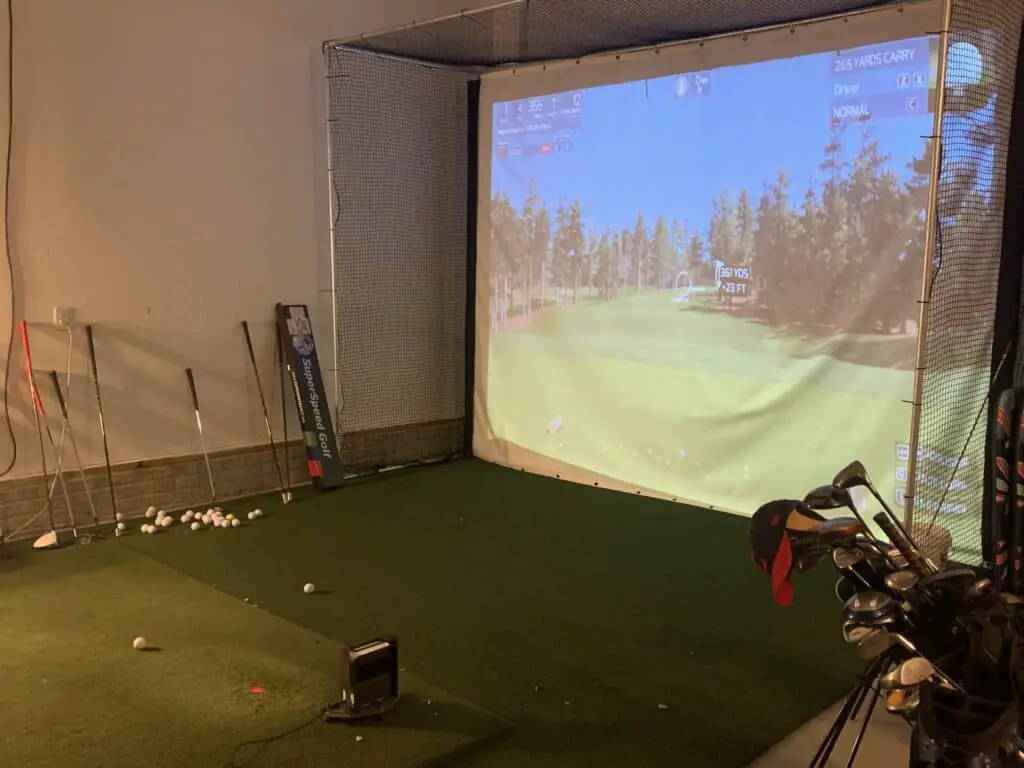In today’s golf world, you might find golfers that carry 4 to 5 wedges.
Within these wedges they typically range from 44 degrees to 60 degrees, depending on what the loft of their 9 iron is.
Golfers have plenty of options and with these options comes some confusion over what the best option might be. Fortunately, we are here to help you make a decision that will fit the strength and weaknesses of your game.
What Is A Gap Wedge?
A gap wedge is a wedge that has between 50 and 52 degrees. It the the club in a bag typically between a 46-48 degree pitching wedge and a 54-56 degree sand wedge. It fills the 8 degree gap that might exist between the pitching the wedge and the sand wedge.
The typical iron set has a difference of 3-4 degrees of loft between the clubs in the bag.
Here is an example below:
| Club Number | 3 | 4 | 5 | 6 | 7 | 8 | 9 | P |
| Typical Loft | 19 | 22 | 25 | 28 | 31 | 35 | 39 | 43 |
The need was created for a gap wedge as players added sand wedges and lob wedges at 56 and 60 degrees.
The first gap wedges usually met the gap between the 48 degree pitching wedge and the 56 degree sand wedge.
Golfers can have one of two typical setups with their wedges
- 3 wedges (48, 54, 60)
- 4 wedges (48, 52, 56, 60)
In the 2nd setup the 52 degree club is considered the gap wedge.

What distance is the gap wedge used for?
While this number will vary from golfer to golfer, the typical distance is going to be in the 90 to 120 yard range with a near full swing.
However, the best wedge players are going to be able to control their distance and flight the ball different heights with ever wedge in the bag.
Should I carry 3 or 4 wedges?
If you are comfortable hitting less than full swings with all 3 wedges and are good at controlling your distance, the 3 wedge setup with 6 degrees between wedges, gives you greater versatility through the bag.
However, if you are golfer that struggles with your wedges and can’t control distance, I would recommend the 4 wedge setup, which will include the 52 degree gap wedge.
How far should you hit a sand wedge?
Do You Really Need A Gap Wedge?
No, not if you are good enough controlling the distance with a 3 wedge setup.
Here is a checklist to help you decide on the 3 vs 4 wedges:
If you answer yes to the majority of the questions below, you should consider the 54 degree wedge and the 3 wedge setup.
- I am comfortable hitting 50%-75% wedges from 50-110 yards
- I prefer to have an extra fairway wood, driving iron or hybrid in my bag.
- I feel like I am skilled enough to be creative with a 48, 54 and a 60 degree wedge in my hands.
- I enjoy fighting a variety of wedges at different heights depending on pin location and golf course conditions.
- I am more of a feel player and can adjust to a 6 degree gap between wedges.
If you answer yes to the majority of the questions below, you should consider the 52 degree wedge and the 4 wedge setup.
- I prefer to hit 80% or above wedges for most of my shots.
- I don’t mind having less fairway woods, driving irons or hybrids in my bag.
- I prefer to only have a 4 degree gap and dial in specific distances with more full swings.
- I prefer to hit a similar looking shot every time I use a specific club.
How to hit your wedges longer (3 Tips)

Next Steps: Assess Your Game
With whatever wedge setup you currently have, track some data closely over your next 5 rounds. Here are some things to consider:
- Percentage of greens hit in the following yardage gaps
- 50-75 yards
- 75-100 yards
- 100-125 yards
- Proximity to the pin from the distance above in each category
- How many times in the 5 rounds did you feel uncomfortable with your wedge selection
- How many times in the 5 rounds did you feel comfortable in hitting the ball inside of 15 free
- How many times did you get up and down around the greens with your wedges in your hands form 20 yards or less
Next Steps: Map Your Bag
I would recommend setting up a distance chart for your wedges and then determine what is needed in your game.
Your Chart May Look Something Like This: Option 1
| Wedge | Carry Avg Distance | 3 quarter swing |
| 48 Degree | 125 | 115 |
| 54 Degree | 105 | 95 |
| 60 Degree | 85 | 75 |
Or It May Look Something Like This: Option 2
| Club | Carry Distance (100%) | 90% | 80% |
| Pitching Wedge | 128 | 118 | 108 |
| Approach Wedge | 118 | 110 | 102 |
| SW Club | 105 | 97 | 91 |
| LW Club | 85 | 76 | 68 |

Can I Chip With A Gap Wedge?
Yes, most golfers will use the gap wedge on the shots that need to run out a bit more on the green compared to a 56 or 60 degree wedge chip shot.
There are two different approaches that most golfers take:
- Always play the 60 degree wedge, unless it is a simple bump and run. They adjust their chipping motion and the loft used based on the shot at hand.
- Vary their club from shot to shot depending on the idea loft and amount of run needed to play a comfortable shot that uses a similar motion on the majority of shots and changes the wedge to control the other variables.
This one simply comes down to comfort. There are golfers that play great golf using both methods. Spend time around the practice green and see which one best fits your current skill set and comfort level. Much of chipping comes down to confidence and having a club on how far the ball will fly when you change the different variables, which include:
- Club
- Ball position
- Swing length
- Swing speed
- Lie
Final Thoughts
You get to carry 14 clubs. The best option is to test out a variety of options, track your data and make a quality decision on what is best for your game. Data will often tell the truth and help you make the right decision based on your results and your current skill set.

My Secret To Golf Improvement
Let’s face it, in order to get really good at golf, we must practice frequently. About three years ago, I made the leap and invested in a golf simulator build for my garage. I went with a SkyTrak Launch Monitor and the TGC software and can now play over 100,000 courses including Augusta, Pebble Beach, Bethpage Black, Whistling Straits. St. Andrews and many other of the top 100 courses in the world.
This golf simulator setup, which is more affordable that you might imagine, has been a game changer. I can now play golf everyday of the year regardless of rain, snow, cold weather or time of day. I can practice or play rounds of golf. I can stand in the 11th fairway at Augusta and with the auto-rewind feature I am able to practice my approach shots from various differences.
It is worth checking out through Rain or Shine Golf as they offer some incredible packages along with financing offers that are difficult to beat.
Some direct links to Rain or Shine Golf for pricing and financing:
Take Action – What You Can Do Today to Get Better
What does this mean for you? I believe in the following recipe to get better:
1 – Improve your motion in the golf swing by identifying a golf instructor. Here are some options:
Here is a list of golf instructors that we have reviewed:
2 – Train to swing faster and improve your swing speed. Here are some options:
Looking to gain more Speed and Distance in your swing. Two Options:
3 – Understand course strategy and work to break through your next barrier. Here is a series on breaking through:
We have provided guides on how to break 100, 90, 80 and 70. Check out more below, if interested.
4 – Practice Frequently
Did you know that I build a golf simulator in my garage and have played over 500 rounds of golf on my SkyTrak system? It has been a game changer and one worth checking out. Here are some of my other posts on golf simulators frequently asked questions:
- Is a Golf Simulator Worth It?
- How to Build a Golf Simulator?
- What is the Best Golf Simulator?
- Golf Simulator Accessories?
- How to Build a Golf Simulator for under $7000
- Top 11 Reasons to Buy a SkyTrak
- How to Build a Golf Simulator for Under $1000
- Why Build A Golf Simulator?
- What Space is Needed?
- Can A Golf Simulator Improve My Game?
- How Much Does A Golf Simulator Cost?
- Don’t Forget to Check out our 15 best golf swings of all time.

